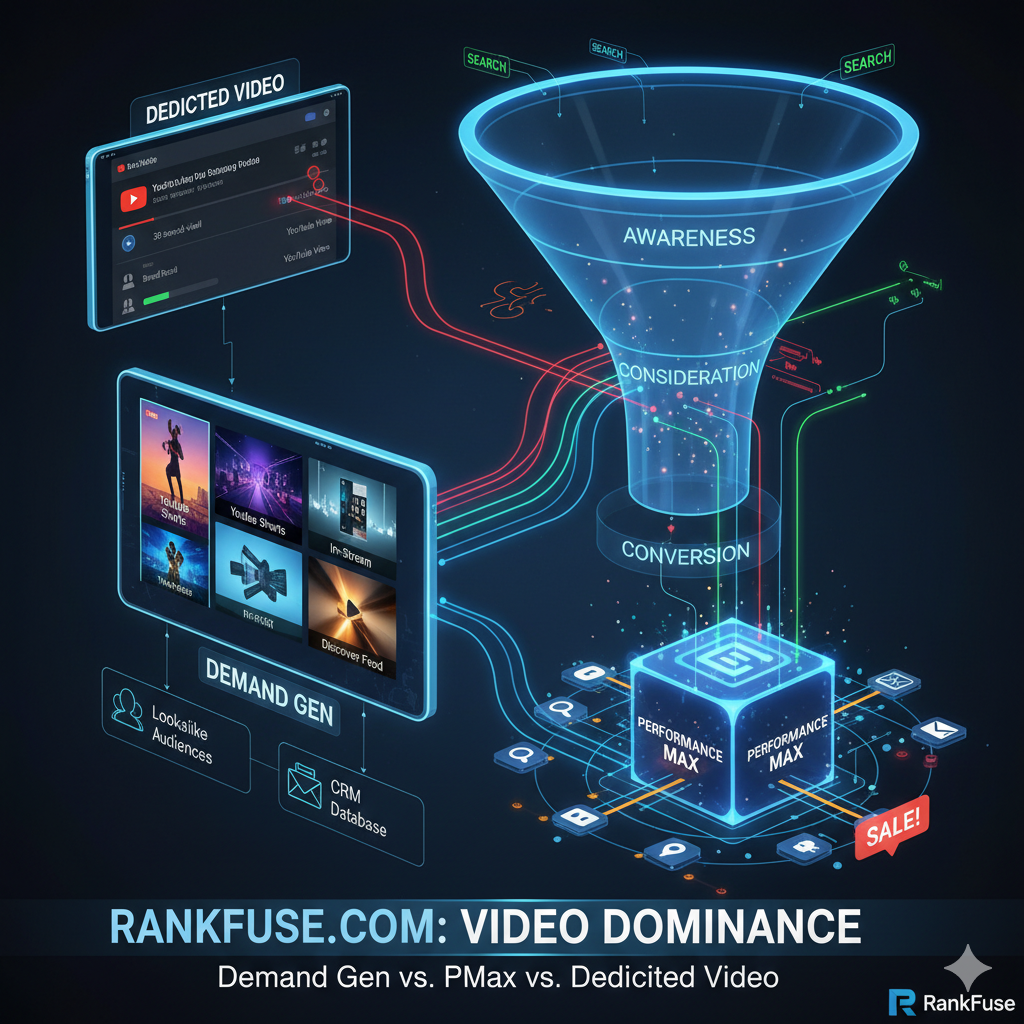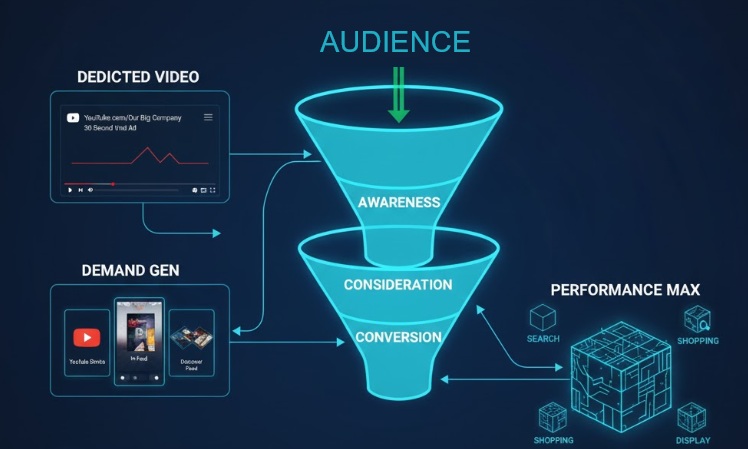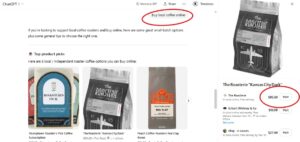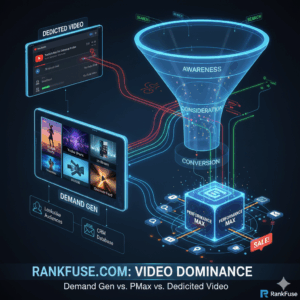How to Choose Between Demand Gen, PMax, and Dedicated Video Campaigns
The modern Google Ads ecosystem demands video, but which campaign type is best for your business goals? The answer to this question has never been more complicated.
When Google launched video ads in 2008 the options were straightforward, but with the full-scale emergence of Performance Max (PMax) and the evolution of Video Action Campaigns into Demand Generation (Demand Gen), advertisers now face a “video campaign showdown” that necessitates a deep strategic understanding to choose the right path for growth.
This guide cuts through the complexity, outlining the differences between Demand Gen, Performance Max (PMax), and Dedicated Video Campaigns to help you make the right strategic decision for your growth.
The Video Campaign Showdown: Funnel, Format, and Focus
The key to choosing the right campaign lies in its role in the marketing funnel: building awareness, generating leads, or maximizing final conversions.
Feature |
Demand Generation |
Performance Max (PMax) |
Dedicated Video Ad Campaigns (YouTube) |
| Primary Funnel Role | Mid-to-Upper Funnel. Generate and nurture new demand and high-quality leads. Aims to build a relationship with the audience | Bottom Funnel. Maximize immediate conversions and final sales volume. Focuses on lower-funnel goals | Top Funnel. Maximize brand awareness, video views, and reach. For storytelling and brand recall goals. |
| Key Placements | Visual-First: YouTube (Shorts, In-stream, In-feed), Discover Feed, Gmail. | Full Google Inventory: Search, Shopping, Display, YouTube, Gmail, Maps, and Discover. | YouTube & Google Video Partners only. |
| Control Over Targeting | High. Offers granular targeting options, including Lookalike Audiences and specific Custom Segments. Advertisers can manually manage creatives, placements, and targeting. | Low. Fully automated. Relies heavily on Google AI to optimize bids and placement. Targeting is based on strong audience signals built by the advertiser. | High. Granular control over specific channel or audience demographics. |
| Video Asset Use | Creative Testing: Used to find the highest-performing visual ads that nurture a cold lead. Captivating creatives tailored for each placement perform best. | Conversion Driver: Video is one of many assets (text, images, video) the AI uses to push a user to the final conversion. | Storytelling/Recall: Used to maximize video completion rate and brand recall. |
| Video Format | Supports Skippable In-Stream, In-Feed, and Shorts formats. | Supports Skippable In-Stream and other video formats. | Focuses on Skippable In-Stream (TrueView) or Non-Skippable (Bumper/Reach). |
| Historical Context | Considered an upgrade to and replacement for Video Action Campaigns (VAC). | Evolved from Smart Shopping and Local campaigns | Established the format of “TrueView” ads, which allowed users to choose whether to watch, marking an important shift toward less intrusive advertising |
How Views Are Counted (And Why It Matters)
If your goal is to grow your public YouTube subscriber count or view totals, the campaign type matters:
- Dedicated Video Campaigns: These offer the most straightforward way to gain “TrueView” views (30 seconds watched or a click), which are most likely to count towards your public YouTube view count.
- Demand Gen: Views are a secondary metric used for awareness, but the primary focus is on View-Through Conversions (VTCs)—where a user sees your video ad (without clicking) and converts later.
- PMax: Views are not a primary reporting metric. The system only cares that the video drove a conversion.
Determining Your Best Campaign: A Strategic Framework
Use this framework to match your current business needs with the right Google Ads video campaign:
Business Goal |
Best Campaign(s) to Start With |
Why This Strategy Works |
| Generate High-Quality Leads (B2B/Services) | 1. Pmax 2. Demand Gen |
Pmax captures immediate demand. The goal for these campaigns is always a conversion event. Demand Gen targets sophisticated Lookalike Audiences and retargets site visitors using compelling visual video to generate high-quality leads higher up the funnel. |
| Scale E-commerce Sales/Revenue | 1. Search/Shopping 2. PMax |
Search and shopping establish a sales baseline and help build your retargeting audience. Never start with just video; scale with it. PMax automates the scaling process, using your video assets alongside product feeds to maximize conversion value across Google’s entire network. |
| Build Brand Awareness and Audience |
1. Dedicated Video (YouTube) 2. Demand Gen |
Dedicated Video efficiently drives low-cost views and builds a massive remarketing pool. Demand Gen then targets that engaged, high-quality audience with direct conversion offers. |
The Bottom Line:
If you have stunning, social-ready video assets and need to control who you prospect to, Demand Gen is your answer. If you simply need the most conversions and are willing to sacrifice control for scale and automation, PMax is the clear winner.
Ready to Command Your Conversion Funnel?
While grasping the general concepts is great for investing and setting expectations, navigating the complexities of Demand Gen, Performance Max, and dedicated video strategies requires deep expertise.
Optimizing your video creative, setting the right audience signals, and managing budget allocation across these powerful automated campaigns is the difference between simply spending money and achieving exponential growth.
If you’re looking for more help, we specialize in building integrated, full-funnel strategies that leverage the unique power of each Google campaign type—ensuring your text ads, banners, and video ads are seen by the right people at the right time.
Stop leaving revenue on the table. Let our experts architect the perfect Google Ads strategy for your business. Contact Rank Fuse today to discuss your growth goals





